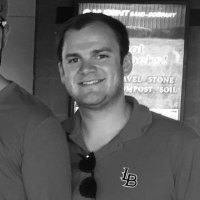The A’s Have Handled Their Roster Logjam Perfectly
The Athletics have had to find creative ways to get their best nine bats in the lineup. So far, it's paying off.

The Athletics are starting to show that last season’s .500 record in the second half was truly the beginning of better baseball. They enter May 13 with a 21-20 record and a 7.0% chance of making the postseason, according to Baseball Reference.
While it doesn’t deserve a parade, it is certainly promising for a team that has struggled the past few seasons. A rebuild that specifically targeted players with MLB experience, or on the cusp of making their debut, has helped accelerate what would normally be a much longer process.
Add a couple of reclamation projects and first-round selections who were college bats, and suddenly the A’s are starting to look like a formidable team. Hitting on a number of their moves and draft selections sped up their rebuild while also giving manager Mark Kotsay the challenge of fitting all of these bats into his lineup.
The Athletics have a top-10 offense in MLB by wRC+ (110), average (.259), slugging (.421), and home runs (51). Not only are they putting up power numbers, they are also putting the ball in play, striking out only 19.8%, the third lowest rate in the American League.
To Kotsay’s credit, and thanks to the players buying in, the A’s have found creative ways to shift players around the diamond in order to get their best nine bats in the lineup, and it is paying off.
Squeezing in Three Power Bats

When Tyler Soderstrom was coming up in the Athletics system, it was as a catcher. Shaky defense and Shea Langeliers already holding down the position led to the A’s shifting Soderstrom to first base, at least for the time being.
Selecting power-hitting first baseman Nick Kurtz with their first-overall selection in 2024 was a bit of a head scratcher considering Soderstrom was set to hold down the position for the foreseeable future. But, passing up on a bat like Kurtz, who was close to major league ready, was something the Athletics couldn’t stomach. Go best available and cross that road when you get to it.
Well, that road was crossed not even a year later when the Athletics called up Kurtz in late April.
The initial thought was to move DH Brent Rooker back to the outfield where he has played throughout his career. However, Rooker has always been a poor fielder, so the A’s pivoted back to Soderstrom and asked him, once again, to move positions.
So far, it has actually worked out pretty well for everyone. Soderstrom, who was a -8 OAA defender in 97 career games at first, has graded out as a 0 OAA defender in left. The sample size of 15 games is too small to take much away from, but he did have a nice assist from left to throw a runner out at third over the weekend.
The most important part of all these roster gymnastics is getting Kurtz’s bat in the lineup by playing him at first. While he’s struggled with breaking balls and offspeed pitches, Kurtz has still managed a .269/.322/.327 slash to start his career. That’s not terrible, considering his limited time in the minors.
His 39% strikeout rate will likely drop as he continues to adjust to major league pitching, but for now, at least he’s shown that he can stay afloat.
Essentially, the A’s replaced Seth Brown’s regular at-bats with Nick Kurtz. As much as Brown has given to this organization over the years, we all know the best version of the 2025 Athletics will be with Kurtz in the lineup. Making this move now allows for Kurtz to settle in, get his feet wet, and hopefully push through growing pains with plenty of season left to help the Athletics make a push.
Secondary Players Moving Around
The domino effect of adding Kurtz did not stop with Soderstrom. His move to the outfield meant that Miguel Andujar no longer had a spot in left field.
The same Miguel Andujar who Yankees fans always wanted to headline their hypothetical blockbuster trades has actually turned into a very useful player since joining the Athletics.
After he slashed .285/.320/.377 with a 103 wRC+ last season, the A’s wanted Andujar back, at least as insurance in 2025. He’s been more than just a solid placeholder, with a .306/.336/.407 slash and 111 wRC+ that the A’s need to keep in the lineup.
So, to keep his bat in the lineup, Andujar moved back to third base, a position he played in 136 games in 2018 – and 14 games since. In fact, the last time Andujar played third was in 2021 when he was still a member of the Yankees.
This move pushed veteran Gio Urshela, who was a placeholder himself and has struggled out of the gate, to a bench role. The move also makes Max Schuemann useful as a true utility man that can be utilized in a multitude of ways instead of being the primary break-glass-in-case-of-emergency move at third.
Once second baseman Zack Gelof comes back from a hamate injury, he’ll likely take over at second. Veteran Luis Urías, who’s off to a great start, can provide an insurance plan at third and second and help give this team even more quality depth.
The ripple effect of adding Kurtz has been managed perfectly. The A’s are finding ways to get their best group of players on the field day in and day out. As players come back, or injuries subtract, they now have a better base to fall back on.
Final Thoughts

The job Mark Kotsay has done, especially when you consider the circumstances, has been nothing short of great. His record does not tell the story, but the extension he was given in February tells you all you need to know.
He’s building a culture in this clubhouse and obviously has players buying in. Yes, it is different than the conversation about Rafael Devers moving positions in Boston, but nonetheless, having players shift to new positions is never an easy conversation to have.
You are asking a professional to change what they do and risk a certain aspect of their career for the betterment of the team. The A’s have enough offensive pieces to take major steps forward in 2025. Now the pitching has to catch up.

